What is On-Page SEO and Why Does It Matter?

On-Page SEO is the set of actions you take within your website to improve its ranking in search engines like Google.
These actions include optimizing content, site structure, HTML tags, and other factors that are directly under your control.
The importance of On-Page SEO stems from the fact that search engines use these factors to better understand your site’s content and its relevance to user searches.
Without a strong On-Page SEO strategy, even the best content may not be visible in search results.
In fact, On-Page SEO helps you communicate to search engines what your page is about and why they should display it to users.
On-Page SEO is one of the most important actions that can directly affect your website’s SEO.
This process involves reviewing and optimizing various elements on the web page that can improve the website’s ranking in search results.
Using appropriate #keywords in titles and texts, optimizing images using alt tags, creating a proper internal link structure, and improving page loading speed are among the most important actions that should be taken in #On_Page_SEO.
Overall, On-Page SEO serves as the foundation of your #website_SEO and can help you improve your website’s ranking in search results and attract more visitors.
How much does losing business leads due to an unprofessional website cost you? Solve this problem forever with a professional company website design by Rasaweb!
✅ Increased credibility and trust with potential customers
✅ Easier attraction of new business leads
⚡ Get a free consultation now!
Keyword Research: The Foundation of On-Page SEO
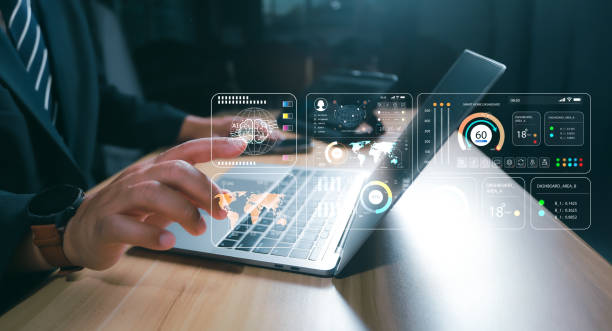
Keyword research is the first and most important step in any On-Page SEO strategy.
You need to know what words your target audience enters into search engines so you can optimize your content accordingly.
There are various tools for keyword research, including Google Keyword Planner, Ahrefs, SEMrush, and Moz Keyword Explorer.
When choosing keywords, pay attention to search volume (the number of times a keyword is searched for in a month) and competition (how difficult it is to rank for that keyword).
Long-Tail Keywords usually have lower search volume, but competition is also lower, and they can attract more targeted traffic to your site.
A good strategy is to use a combination of primary keywords and long-tail keywords in your content.
After finding the appropriate keywords, you should use them naturally in the page title (Title Tag), meta description (Meta Description), heading tags (Heading Tags), and the main text of the page.
The goal is to show search engines what your page is about and why they should display it to users.
By conducting thorough keyword research and using keywords correctly, you can significantly improve your site’s On-Page SEO.
Optimizing the Title Tag and Meta Description
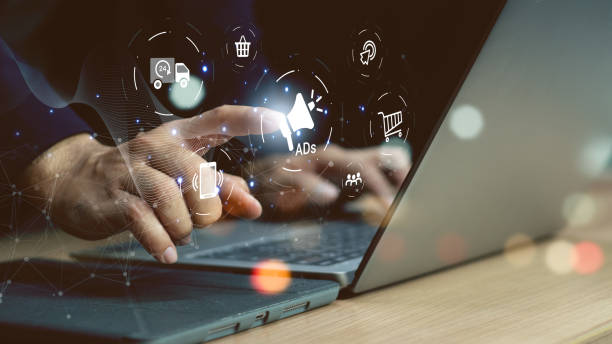
The Title Tag and Meta Description are two important HTML elements that are displayed in search results.
The Title Tag should be concise, engaging, and contain the primary keyword.
It is recommended that the length of the Title Tag be between 50 and 60 characters.
The Meta Description should be a summary of the page’s content and encourage users to click on your site’s link.
It is recommended that the length of the Meta Description be between 150 and 160 characters.
Both the Title Tag and Meta Description should be unique and specifically written for each page of your site.
Avoid repeating the same Title Tag and Meta Description on multiple pages.
Using relevant keywords in the Title Tag and Meta Description can help improve your site’s ranking in search results.
Remember that the Title Tag and Meta Description are the first things users see in search results, so you should design them carefully to have the best impact.
On-Page SEO is highly dependent on these two elements, and they should not be neglected.
Using a suitable Title Tag can have a significant impact on SEO.
Below is a table of Title Tag and Meta Description optimization.
| Element | Description | Best Practices |
|---|---|---|
| Title Tag | Text displayed in the browser tab and search results. | Concise (50-60 characters), contains keyword, engaging, unique. |
| Meta Description | Summary of the page’s content displayed in search results. | Concise (150-160 characters), engaging, persuasive, unique. |
Optimizing Heading Tags
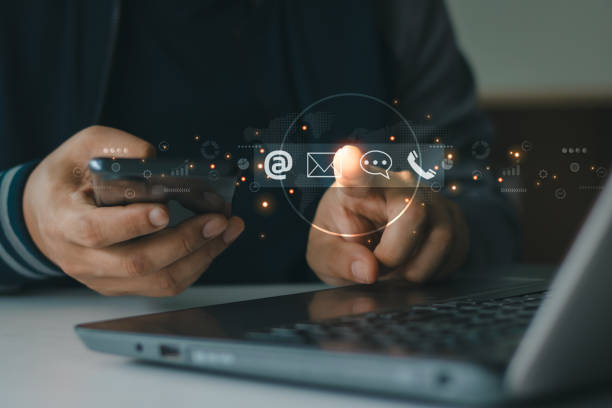
Heading Tags are HTML tags used to organize and structure the content of a page.
The H1 tag is the most important heading and should indicate the main title of the page.
H2 to H6 tags are used for subheadings and different sections of content.
Using heading tags helps search engines better understand the structure and main topics of the page.
It is recommended to use relevant keywords in heading tags, but avoid overdoing it.
Heading tags should be organized logically and hierarchically.
For example, a page can have one H1 tag, several H2 tags, and H3 and H4 tags under them.
Correctly using heading tags not only helps your site’s On-Page SEO but also improves the user experience and makes it easier for users to read and understand the content.
It is very important from an On-Page SEO perspective that these tags are used correctly.
Using H1 to H6 tags correctly can improve your site’s ranking on Google.
Are you tired of your company’s website not being seen as it should be and losing potential customers? Solve this problem forever with a professional and effective website design by Rasaweb!
✅ Increased brand credibility and customer trust
✅ Attracting targeted sales leads
⚡ Contact us now for a free consultation!
Content Optimization: High-Quality and Relevant Content

Content is king! This famous saying in the world of SEO still holds true.
High-quality and relevant content is the most important factor in ranking your site in search results.
Search engines are looking for pages that provide the best answer to users’ questions.
Therefore, your content should be comprehensive, accurate, informative, and engaging.
Use relevant keywords naturally in your content, but avoid overdoing it.
Content should be written for users, not for search engines.
Try to update your content regularly and add new information to it.
Using images, videos, and other multimedia elements can make your content more engaging and interactive.
Make sure your content is unique and avoid copying content from others.
Copied content can harm your site’s ranking.
Producing unique and high-quality content is one of the best ways to improve On-Page SEO, which allows your website to achieve a better ranking in search results.
On-Page SEO and producing high-quality content are directly related, and by producing high-quality content, you can attract many visitors.
Image Optimization: Alt Tag and File Name
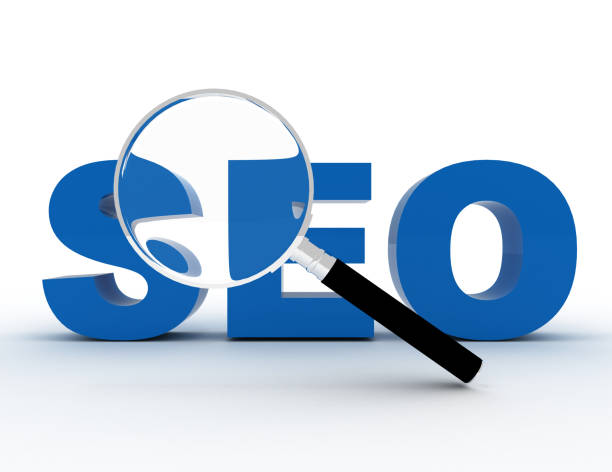
Images play an important role in the attractiveness and engagement of your content.
But images also need to be optimized for search engines.
The alt tag is an HTML attribute that allows you to provide a textual description of the image.
Search engines use the alt tag to understand the content of the image.
Therefore, the alt tag should be concise, relevant, and contain a keyword.
Avoid using general terms such as “image” or “photo.”
The image file name should also be descriptive and contain a keyword.
For example, instead of the file name “IMG_1234.jpg,” use the file name “on-page-seo-site.jpg.”
Optimize the image file size to reduce page loading speed.
Large image files can slow down page loading speed and affect the user experience.
Use appropriate image formats such as JPEG, PNG, or WebP.
By optimizing images, you can improve your site’s On-Page SEO and provide a better user experience for visitors.
Using optimized images on the site improves On-Page SEO.
Internal Link Structure: Creating a Communication Network

The internal link structure refers to how different pages of your site are linked to each other.
Creating a strong internal link structure helps search engines better find and index your site’s pages.
Internal links also help users easily navigate your site and find the content they are looking for.
When creating internal links, pay attention to the thematic connection between the pages.
Internal links should be placed naturally in the content of the page, and avoid using general terms such as “click here.”
Use descriptive anchor text containing a keyword.
The anchor text should accurately reflect the topic of the destination page.
Make sure all important pages of your site are accessible through internal links.
Avoid creating orphan pages that have no links to them.
By creating a strong internal link structure, you can improve your site’s On-Page SEO and provide a better user experience for visitors.
Below is a table for better understanding the structure of internal links.
| Feature | Description | Best Practices |
|---|---|---|
| Thematic Connection | Links should be created between pages related to the same topic. | Linking to pages that provide additional information about the topic of the current page. |
| Anchor Text | Text that links to another page. | Using descriptive text containing a keyword that accurately reflects the topic of the destination page. |
| Accessibility | All important pages of the site should be accessible through internal links. | Preventing the creation of orphan pages and ensuring that each page has at least one internal link. |
Page Loading Speed: A Critical Factor in SEO
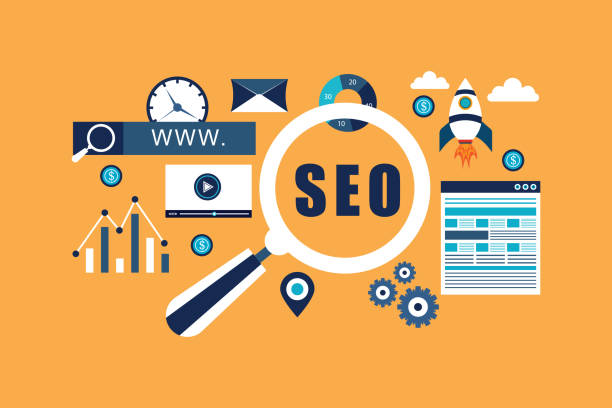
Page loading speed is one of the most important factors in ranking your site in search results.
Users expect web pages to load in a few seconds.
If your page loads slowly, users will leave your site and go to other sites.
Search engines also pay attention to page loading speed, and sites with faster loading speeds rank better.
To improve page loading speed, you can use various methods, including optimizing images, compressing CSS and JavaScript files, using a CDN (Content Delivery Network), and choosing a quality hosting.
You can test your page loading speed using tools such as Google PageSpeed Insights and GTmetrix.
These tools help you identify page loading speed issues and provide solutions to fix them.
On-Page SEO depends on the loading speed of your website pages, and the faster the speed, the better the ranking you will have on Google.
By improving page loading speed, you can provide a better user experience for visitors and improve your site’s ranking in search results.
On-Page SEO depends on website loading speed and mobile site optimization.
Are you dissatisfied with the low rate of converting visitors into customers on your online store?
Solve this problem forever with a professional online store design by Rasaweb!
✅ Increase visitor to customer conversion rate
✅ Create a great user experience and build customer trust
⚡ Get a free consultation
Mobile Optimization: Compatibility with Mobile Devices
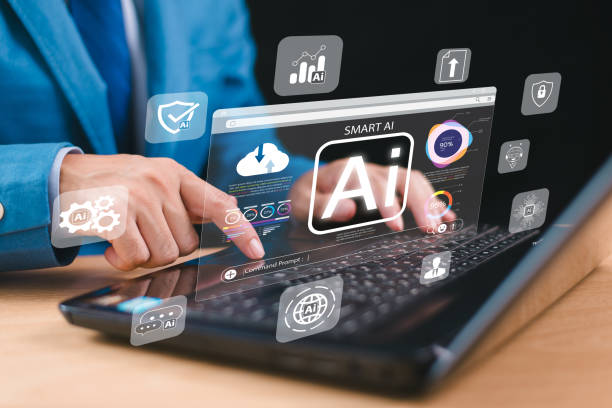
With the increasing use of mobile devices, mobile optimization is essential for your site’s On-Page SEO.
Since 2019, Google has been using a Mobile-First Indexing approach, meaning that it considers the mobile version of your site as the primary version for indexing and ranking.
Therefore, if your site is not optimized for mobile devices, your site’s ranking in search results will decrease.
To optimize for mobile, you should use a Responsive Design that automatically adapts to the screen size of different devices.
You should also optimize the page loading speed on mobile devices and make sure that all elements of your site are displayed correctly on mobile devices.
You can test your site using Google’s Mobile-Friendly Test tool.
On-Page SEO has a direct relationship with mobile site optimization.
A site optimized for mobile can achieve a good ranking in Google results.
By optimizing for mobile, you can provide a better user experience for users using mobile devices and improve your site’s ranking in search results.
You can also use AMP (Accelerated Mobile Pages) to increase the loading speed of the site on mobile.
Continuous Review and Updates: SEO is an Ongoing Process
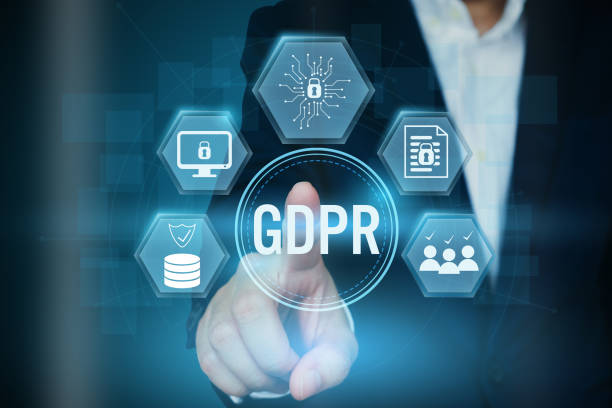
On-Page SEO is not a one-time process, but an ongoing process that requires continuous review and updates.
Search engine algorithms are constantly changing, so you should regularly update your On-Page SEO strategy to keep up with the latest changes.
Regularly check the performance of your keywords and add new keywords to your strategy.
Update your content regularly and add new information to it.
Check your internal and external links and fix broken links.
Test your page loading speed regularly and improve it if needed.
By continuously reviewing and updating your On-Page SEO strategy, you can maintain your site’s ranking in search results and attract more traffic to your site.
Remember that On-Page SEO is a long-term investment that requires patience and perseverance.
The more you work to optimize your site, the better the results you will get.
There are various tools for checking and monitoring site SEO, such as Google Search Console, Google Analytics, Ahrefs, and SEMrush.
Using these tools, you can monitor your site’s performance and identify potential problems.
Frequently Asked Questions
| Question | Answer |
|---|---|
| What is On-page SEO? | On-page SEO refers to the set of actions that are performed within your website to improve its ranking in search engine results. This includes optimizing content, site structure, and HTML code. |
| Why is on-page SEO important? | On-page SEO helps search engines understand the content of your page and determine whether your content is relevant to searchers. It is the foundation of any successful SEO strategy. |
| What are the key elements of on-page SEO? | The page title (Title Tag), meta description (Meta Description), use of keywords, image optimization, heading structure (H1, H2, …), internal linking, and content quality are key elements. |
| How to optimize the page title (Title Tag)? | The page title should include the main keyword, be attractive and encouraging to click, and its length should be between 50 and 60 characters (or suitable pixels) to be fully displayed in search results. |
| What role does Meta Description play in on-page SEO? | The meta description is a summary of the content of the page that is displayed below the title in the search results. Although it does not directly affect ranking, it helps SEO by increasing the click-through rate (CTR). |
| What is the importance of using Heading structure (H1, H2, H3) in on-page SEO? | Headings structure the content of the page and make it easier to read. H1 is usually the main title of the page and should include the keyword. H2 and H3 are used to organize subsections and help search engines understand the content hierarchy. |
| How to use keywords effectively in content? | Keywords should be used naturally and logically throughout the content, including the introduction, body, and conclusion. Avoid overfilling keywords (Keyword Stuffing). |
| What steps does image optimization for on-page SEO include? | Includes compressing images to reduce size, using descriptive file names, adding appropriate alternative text (Alt Text), and optimizing the image title and description. Alt Text is critical for accessibility and helping search engines understand the content of the image. |
| What is Internal Linking and what are its benefits? | Internal linking means creating a link from one page on your website to another page on the same website. This helps users to easily navigate your site, distributes page authority across the site, and helps search engines to better understand your site structure. |
| What is the importance of content quality in on-page SEO? | High-quality, accurate, comprehensive, and valuable content for users is the cornerstone of on-page SEO. Search engines prefer content that meets the needs of users. High-quality content leads to more time spent on the site (Dwell Time) and a reduction in the Bounce Rate, which are positive SEO signals. |
And other services of Rasa Web advertising agency in the field of advertising
Smart Conversion Rate Optimization: A new service to increase customer behavior analysis through a content strategy focused on SEO.
Smart Social Media: An exclusive service to grow sales by accurately targeting the audience.
Smart Marketing Automation: Professional optimization to attract customers using attractive user interface design.
Smart Conversion Rate Optimization: A fast and efficient solution for digital branding with a focus on a content strategy focused on SEO.
Smart Data Analysis: A professional solution for digital branding with a focus on intelligent data analysis.
And more than hundreds of other services in the field of Internet advertising, advertising consulting and organizational solutions
Internet Advertising | Advertising Strategy | Advertorial
Sources
Complete SEO site review with professional tools
,Guide to optimizing site pages from Moz
,On-page SEO: A comprehensive guide to optimizing pages
,Comprehensive guide to on-page SEO from Semrush
? Rasaweb Digital Marketing Agency is your creator, companion and guide on the ups and downs of the digital world. By offering services such as designing a website with a modern user interface, professional SEO, and specialized content production, we take your business to the top and create a strong presence in the online space for you.
📍 Tehran, Mirdamad Street, next to the Central Bank, South Kazerun Alley, Ramin Alley No. 6

